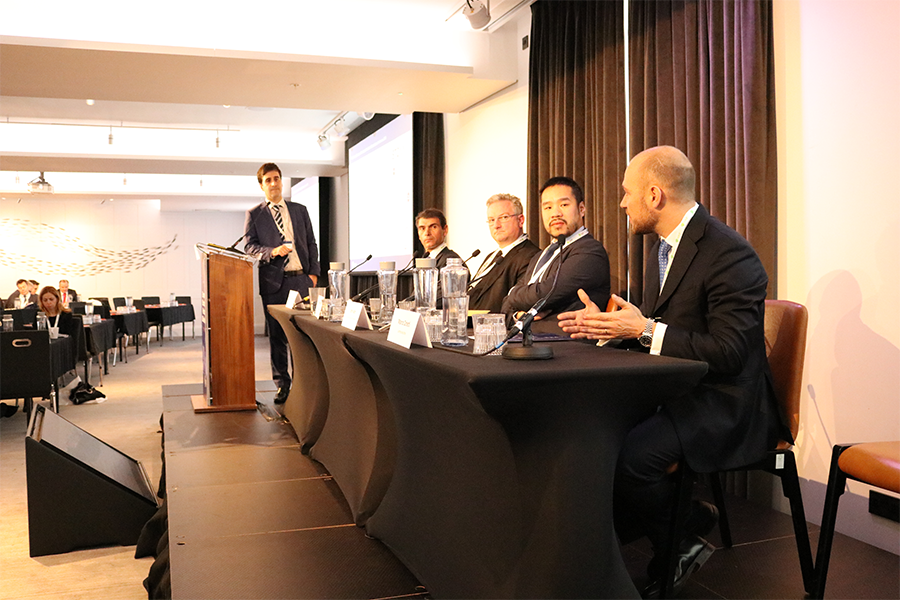The implementation of the key information document (Kid) has not yet panned out in the way regulators were hoping and there is still a long road ahead, according to panellists during The Art of Distribution discussion at the 15th Annual Europe Structured Products & Derivatives conference at the Etc.venues, County Hall, in London.
"There have definitely been some difficulties with the Kid," said Danny Ketels (pictured), senior product & portfolio development manager, KBC Asset Management. KBC has been producing a similar document, the Kiid (key investor information document), for most of its structured funds for a couple of years now, according to Ketels. "Of course, now with Priips, we had to change these a little bit."
According to John Manh, deputy head investment solutions, La Banque Postale Asset Management, the main issue is about costs. "For some it is only about commercial costs, for others it is about commercial cost and hedging costs," said Manh. "We launched a call on the Eurostoxx 50 and it is quite confusing for the client because we have the four scenarios in the Kid, but these are not reflected in the marketing documents."
"Different providers have different scenarios produced for the same product," said Ketels who gave the example of a capped call structure with a five-year tenor and a 90% capital protection. "This type of payoff, if you then look to this Kid document, in the four scenarios, there are three - the favourable, the moderate and even the unfavourable - that will achieve the maximum payoff. It is only when the markets are really stressed in the worst case scenario that you end up with the 90% capital, according to Ketels. "By using the historical data in these Kid documents, comparing different products from different providers becomes even more difficult because we don't use the same model or the same data," said Ketels.
The situation at Leonteq it is slightly different, according to Marco Occhetti, managing director, head of sales for Ticino, Italy, Spain & Portugal, Leonteq Securities. "We work a lot on tailor made products," he said. In 2017 Leonteq issued more than 26,000 products, and implementing the new regulation has been a massive and critical challenge for the company, however, Leonteq has been able to completely automatise the production of Kids, according to Occhetti. "It was a huge challenge, we spend 80% of all the IT resources that we had in 2017 for this specific project," said Occhetti. "We find ourselves in quite a good position were all the implementations are working," said Occhetti who admitted that the output of the Kid was "definitely different from what probably was the major aim that the regulator wanted to achieve". "I think the road is still long, we will get there but probably it will need much more confrontation."
"We are trying to get clients from normal account savings into structured funds or investments and that is an extra hurdle today," said Ketels. "We are of course in favour of transparency which is the key reason behind Mifid 2 and Priips, but if we talk to first time investors, or people that are not experienced in investing, going from savings to investments becomes even more difficult because all structured funds are labelled as being complex now," said Ketels who added that the legislation didn't follow the industry, "but we have to cope with it".
The implementation of the Kid has slowed down the activity, according to Juan Ramon Dominguez Recio, head of equity structured products sales Europe, BBVA. "We have seen that in countries such as Portugal where there has been very little activity," said Dominguez Recio. "The interpretation of the rules, the time that we spend internally, trying to get agreements with legal, compliance as well as the legal teams is hard. Discussions are really time consuming and sometimes for nothing."
BBVA is disclosing both the manufacturing costs and the distribution costs, but, according to Dominguez Recio, the technical cost of implementing the Kid can also have an impact. "The smaller players may well stop offering some of the not so popular payoffs."
Manh agreed that it will be of benefit to the clients to disclose the costs. "In the end the client wants to know what costs he is paying," he said.
Any kind of transfer of transparency to the client when talking about complex instruments is definitely something that can support the business and support the confidence that the final investor will have in the instruments itself, according to Occhetti. "The approach is definitely something positive although the complexity has put a lot of pressure on the distributors. I think this happens with every major change as it takes time to settle down," he said.
"Hopefully, after that, we can focus again on the proper distribution, the proper coverage of clients, and not only focusing on the compliance and legal part, but listening to what the client really needs and what he is looking for," said Occhetti. "After that we will be able to improve the processes through technology and go back again to certain types of products that really add value," Occhetti concluded.

Related stories:
Co-creation has helped to fine tune risk premia strategies, SRP Europe